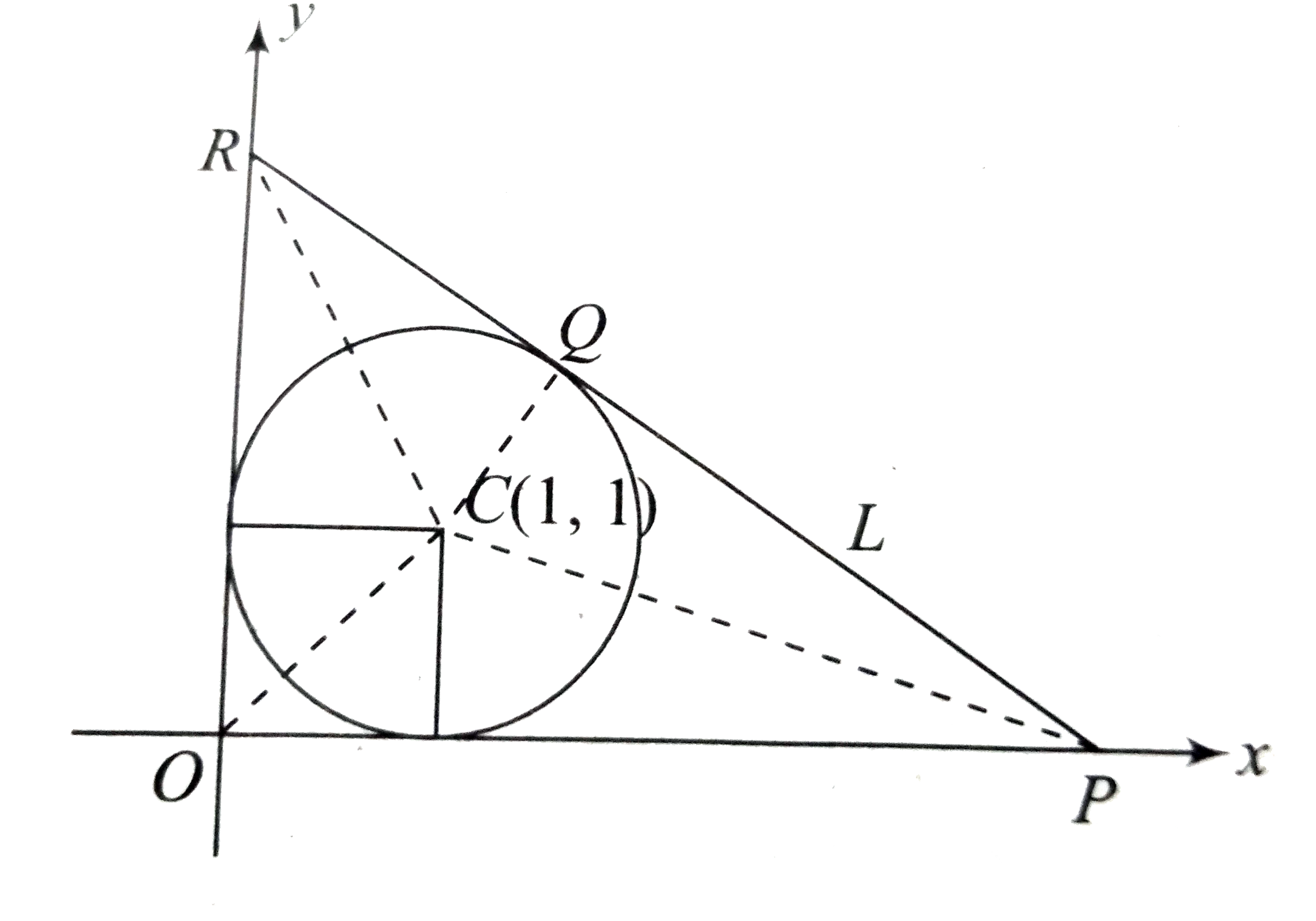If center of a regular hexagon is at the origin and one of the vertices on the Argand diagram is 1+2i , then its perimeter is 2√5 b. 6√2 c. 4√5 d. 6√5
2√5
6√5
4√5
6√5
The correct Answer is:D

Let the vertices be z0,z1,…….,z5 w.r.t centre O at origin and |z0|=√5
Now ΔOA2A3 is equilateral
⇒OA2=OA3=A2A3=√5
Perimeter =6√5
Topper's Solved these Questions
- COMPLEX NUMBERSBOOK - CENGAGE ENGLISHCHAPTER - COMPLEX NUMBERSEXERCISE - MULTIPLE CORRECT ANSWERS TYPE
49 Videos
- COMPLEX NUMBERSBOOK - CENGAGE ENGLISHCHAPTER - COMPLEX NUMBERSEXERCISE - LINKED COMPREHENSION TYPE
36 Videos
- COMPLEX NUMBERSBOOK - CENGAGE ENGLISHCHAPTER - COMPLEX NUMBERSEXERCISE - EXERCISE3.11
6 Videos
- CIRCLESBOOK - CENGAGE ENGLISHCHAPTER - CIRCLESEXERCISE - Comprehension Type
8 Videos
- CONIC SECTIONSBOOK - CENGAGE ENGLISHCHAPTER - CONIC SECTIONSEXERCISE - All Questions
101 Videos
Similar Questions
If z=ω,ω2whereω is a non-real complex cube root of unity, are two vertices of an equilateral triangle in the Argand plane, then the third vertex may be represented by z=1 b. z=0 c. z=−2 d. z=−1
View SolutionConsider the complex number z=1−isinθ1+icosθ.
The value of θ for which z is purely real are
View SolutionIf α is complex fifth root of unity and (1+α+α2+α3)2005=p+qα+rα2+sα3 (where p,q,r,s are real), then find the value of p+q+r+s.
View Solution
In the diagram as shown, a circle is drawn with centre C(1,1) and radius 1 and a line L. The line L is tangent to the circle at Q. Further L meets the y-axis at R and the x-axis at P in such a way that the angle OPQ equals θ where 0<θ<π2.
Area of triangle OPR when θ=π/4 is
View SolutionGiven that A(1,1) and B(2,−3) are two points and D is a point on AB produced such that AD=3AB. Find the coordinates of D.
View SolutionIf center of a regular hexagon is at the origin and one of the vertices on the Argand diagram is 1+2i , then its perimeter is 2√5 b. 6√2 c. 4√5 d. 6√5
View Solution(i) sqrt(12+6sqrt(3))-sqrt(3) is (ii) sqrt((6-sqrt(5))+sqrt(14+6sqrt(5)))sqrt(3+2sqrt(2))-2sqrt(2)
View SolutionA regular hexagon of side 10 cm has a charge 5μC at each of its vertices. Calculate the potential at the center of the hexagon.
View SolutionMultiply: 6sqrt(5) and 2sqrt(5)
View Solution6√5 को 2√5 से गुणा कीजिए ।
View Solution6√5 को 2√5 से गुणा कीजिए।
View SolutionIf centre of a regular hexagon is at origin and one of the vertices on Argand diagram is 1+2i, where i=√−1, then its perimeter is
View SolutionIf (3√5−6√7)−(2√5−11√7)=a√5+b√7, then find the values of a and b.
View Solution6√5 को 2√5 से गुणा करने पर मिलेगा -
View SolutionWhat is the perimeter of a regular hexagon of side '5'm is?
View SolutionFind the square roots of the following:
(i) 3−4√7i
(ii) 4+6√−5
(iii) −2+2√3i.
View Solution

